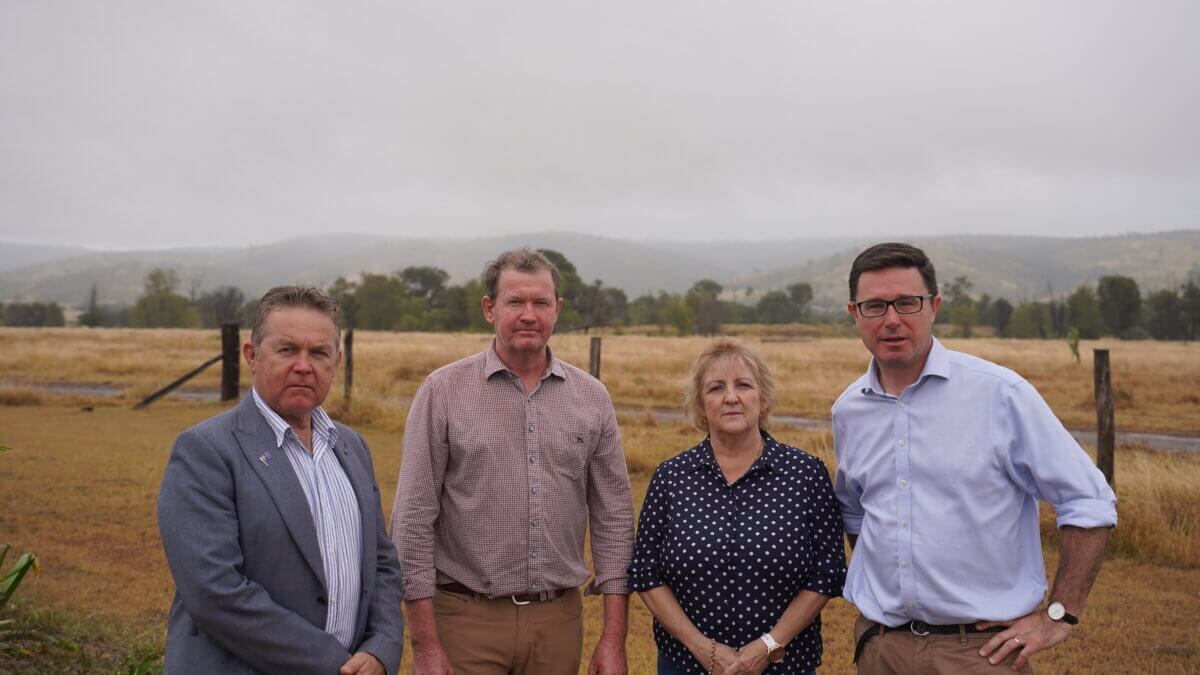Leader of The Nationals David Littleproud is calling on the State Labor Queensland Government and Fortescue to come clean on how much water they plan to take from the Fitzroy River and Rookwood Weir for use in the proposed hydrogen project in Gladstone.
It comes after reports Fortescue, owned by billionaire Andrew ‘Twiggy’ Forrest, has ticked off on a $US150 million, 50-megawatt green hydrogen project at Gladstone in Queensland. Mr Forrest has previously stated that his green project in Gladstone would double the world’s hydrogen production capacity.
Mr Littleproud said up to 20,000 megalitres of agricultural water was potentially at risk and the Queensland Government must explain what Twiggy was planning to do with Queensland’s water and what his proposed hydrogen project meant for the future of Central Queensland.
“Removing water to help Twiggy’s business ventures will only drive up the cost of living, with less water available for farmers and producers,” Mr Littleproud said.
“When supply goes down, prices go up, which is why families in Central Queensland will be forced to pay even more for food at the grocery checkout. The former Coalition Government contributed $183.6 million to the vital Rookwood Weir.
“The project will hold 86,000 megalitres of water and is crucial for Central Queensland. However, the State Government needs to explain how much of that will be used for hydrogen, when will the hydrogen project start, and who will benefit?”
Shadow Water Minister Senator Perin Davey said from what little is known about the green hydrogen project, the numbers don’t stack up.
“We know from the existing hydrogen park in Gladstone that it takes 15 litres to produce 1 kilogram of hydrogen. Fortescue are proposing to produce 22,000 kilograms of hydrogen per day. That will take 330,000L of water per day,” Senator Davey said.
“Over a year that works out to be over 120GL, which is more than the 86GL full supply capacity of the new Rookwood Weir. You can understand why locals are questioning where the water will come from when you see figures like that.”
The Rookwood Weir has also paved the way for the almost $1 billion Fitzroy to Gladstone pipeline, with the first sod now turned. The 117-kilometre pipeline will run from the Lower Fitzroy River in Rockhampton and connect Gladstone residents and industry. Senator Davey questioned the motives behind Premier Palaszczuk’s press release promoting the pipeline for new industries “like hydrogen”.
“The pipeline should be about water security, not helping billionaires,” Senator Davey said.
Member for Flynn Colin Boyce asked where the water is going to come from if Australia plans on making a world-class hydrogen industry in Gladstone that can create industrial quantities of hydrogen.
“Even the Gladstone Conservation Council (GCC) has expressed concern about water from Rookwood Weir being used for hydrogen, reporting replacing fossil fuel exports through the Gladstone Port would require 31 million tonnes of hydrogen, and that hydrogen equivalent was three times that of coal and LNG,” Mr Boyce said.
“If the Nathan Gorge Dam at Taroom was built with its planned capacity of 880,000 megalitres and an annual yield of 66,000 megalitres – half of this would only create 3 million tonnes of hydrogen.
“It is not even close to the industrial capacities needed for the hydrogen industry to function.”
Member for Capricornia Michelle Landry said prime agricultural land in her area was already being replaced for wind turbines, but now even water projects risked being undermined for hydrogen.
“Farmers are rightly concerned about the impact it will have on Central Queensland’s agriculture future, with Labor’s plans to funnel water from food and fibre production to a hydrogen plant in Gladstone,” Ms Landry said.
“It took more than a year for Labor to invest in Rookwood Weir to secure the region’s agriculture future and create drought resilience for CQ, but were able to quickly find $1 billion for a pipeline to their green energy push.”







